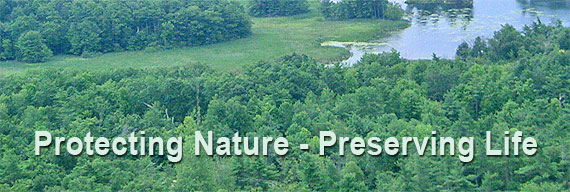|
Auyuittuq
National Park - Sweeping
glaciers and polar sea ice meet jagged granite mountains in
Auyuittuq National Park of Canada. Established in 1976, Auyuittuq - an
Inuktitut word meaning "land that never melts" - protects
19,089 km 2
of glacier-scoured terrain. Located in the eastern Arctic, on southern
Baffin Island, the park includes the highest peaks of the Canadian
Shield, the Penny Ice Cap, marine shorelines along coastal fiords, and
Akshayuk Pass, a traditional travel corridor used by the Inuit for
thousands of years. Whether you wish to climb Auyuittuq's rugged peaks,
ski on its pristine icefields, or hike the scenic Akshayuk Pass, this
park offers unique opportunities to experience the beauty and majesty
of the Arctic.
Quttinirpaaq
(Ellesmere Island) National Park - Welcome...to
the top of the world!
During the
brief arctic summer on Quttinirpaaq, the sun remains high in the sky
bathing the land in continuous daylight. There is no darkness to mark
the passage of time telling you when to sleep and when to wake. There
are no trees to remind you of lands further south. The scale of the
land is both immense and intimate at the same time. Intricate patterns
of rock, frost-cracked ground, willows and wildflowers at your feet
extend out from where you stand into endless vistas in the clear, dry
air. Glaciers on a mountainside 15 km away seem to be details in a
landscape within reach.
Sirmilik
National Park - As
part of Canada's national parks system, Sirmilik National Park
represents the Northern Eastern Arctic Lowlands Natural Region and
portions of the Lancaster Sound Marine Region. The park will comprise
three separate land areas. Bylot Island is a spectacular area of rugged
mountains, icefields and glaciers, coastal lowlands and seabird
colonies. Oliver Sound is a long, narrow fiord with excellent
opportunities for boating, hiking and camping. Borden Peninsula is an
extensive plateau dissected by broad river valleys. The park features
landforms and superb wilderness hiking and camping, and a major seabird
colony in the vicinity of Baillarge Bay.
Ukkusiksalik
National Park -
Ukkusiksalik National Park is located just west of the community of
Repulse Bay and the Arctic Circle. The park surrounds Wager Bay, a 100
km long saltwater inlet on the northwest coast of Hudson Bay in
Nunavut. Declared a national park on August 23, 2003, Ukkusiksalik
became Canada’s 41st national park. Named after the soapstone found
within its boundaries, the park includes 20 500 km2 of eskers,
mudflats, cliffs, rolling tundra banks and unique coastal regions.
While Inuit do hunt in the region, the parkland is uninhabited. Inuit
had lived in the area from 1000 AD through to the 1960s, and the
Hudson’s Bay Company had a trading post there from 1925-1947. Over 500
archaeological sites have been identified in the park, including such
features as fox traps, tent rings, and food caches. The park protects a
representative sample of the Central Tundra Natural Region.
Nunavut
Parks - Nunavut's territorial parks, heritage rivers and
special places offer numerous opportunities to explore, learn, be
inspired, or simply to lay back and enjoy yourself. From feeling the
sharp bite of ice on your face kicked up by enthusiastic sled dogs on
the way to Qaummaarviit in the spring; watching in awe as the aurora
borealis dances overhead in Ovayok where the sun disappears for days;
following caribou and wolf tracks through the lush green valley of the
Soper Heritage River; to tracing the route of Hearne, Back and Franklin
on the Coppermine River to Kugluk/Bloody Falls Territorial Park. Get
information here on each of our parks, and how to experience them your
way.
|
If
you are nervous about bears, or uncertain of your ability to deal with
them, consider hiring a guide
from one of the communities. Guides are knowledgeable and experienced
at travelling in bear country. When hiring a guide, ask about their
experience, how they will avoid encountering polar bears, and their
plan of action should you encounter a bear.
Ask Parks Canada staff about current bear activity. Some areas may be
closed due to bear activity; obey written and oral warnings.
Be alert and aware of your surroundings. Scan all around with
binoculars at regular intervals. Be vigilant! Watch for signs such as
tracks, droppings, diggings, wildlife carcasses and polar bear dens.
Travel in daylight and avoid areas of restricted visibility. Be
especially careful in areas along the coast, where a polar bear may be
hidden behind boulders, pressure ridges (pushed up sea ice), driftwood
or vegetation.
Travel in groups and stay together to increase your safety. The larger
the group the greater the chances of deterring a bear.
Never approach a bear for any reason. Every bear defends a "critical
space", which varies with each bear and each situation: it may be a few
metres or a hundred metres. Intrusion within this space is considered a
threat and may provoke an attack.
Never approach a fresh kill or carcass as polar bears will defend their
food. Adult polar bears will often only eat the fat of seals and other
kills, but other bears may scavenge from these carcasses.
Never feed bears or any wildlife. A bear that finds food from a human
source begins to associate humans with food. This can result in the
bear losing its natural tendency to avoid people and becoming
persistent in its search for human food. The consequences for you and
the bear can be serious. A bear that associates food with humans is
more likely to injure people and these bears may have to be relocated
or killed.
Learn more about polar bears: PDF: Polar Bear Country
pamphlet (2.02 Mb)
|













